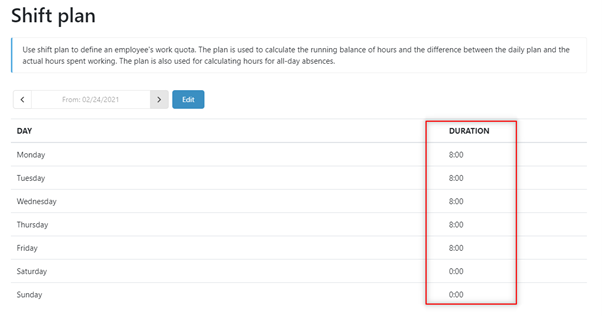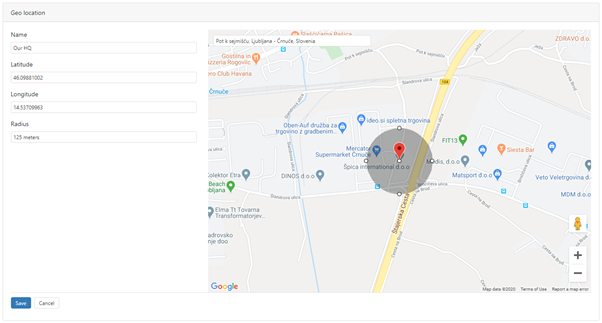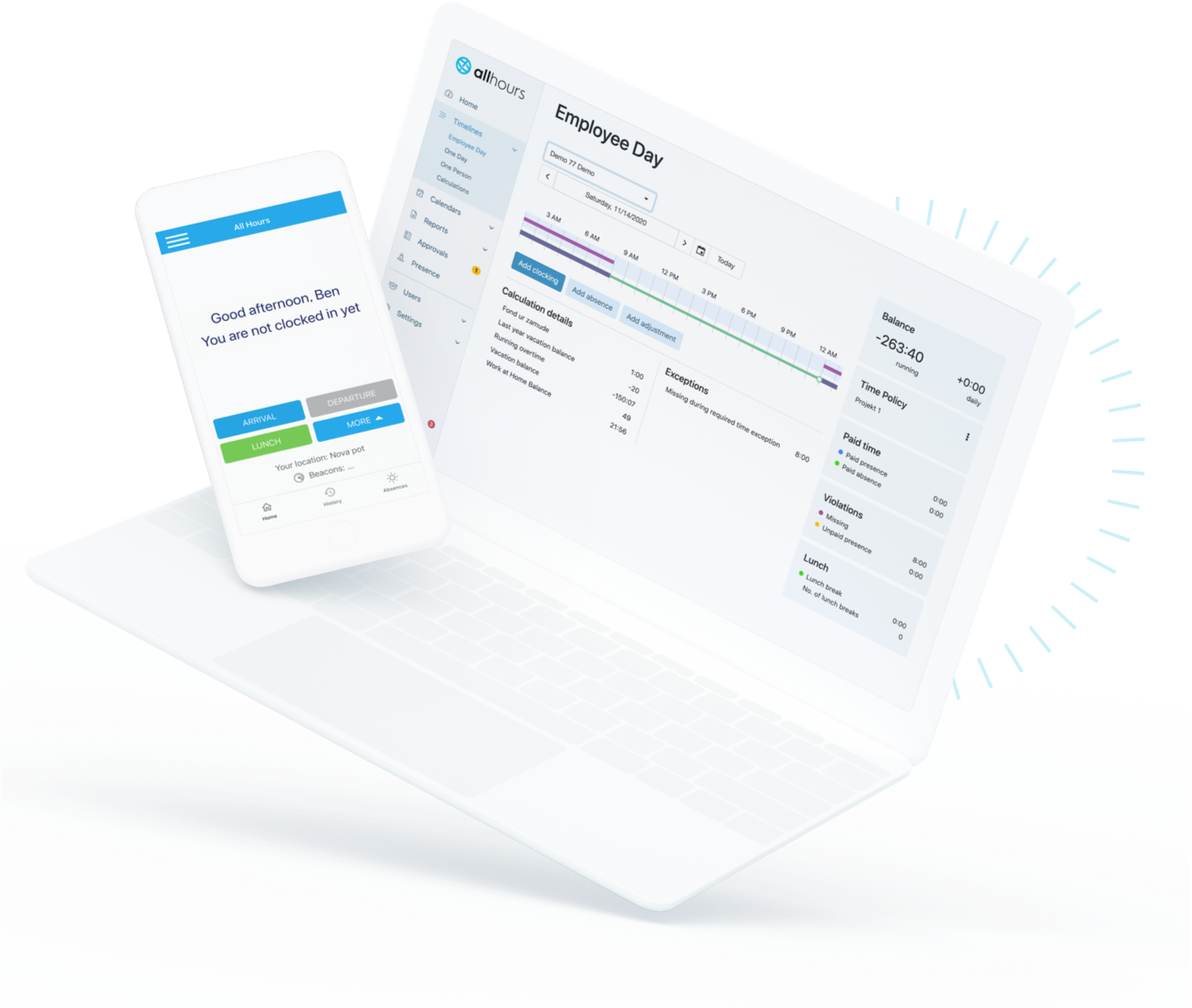Remote Work – Advantages and Disadvantages


Remote work or flexplace means changing the central location of work away from the usual office workspace.
Remote work is usually done from home, a personal office, or any other favorite spot of an employee. In the case of working from home it may even mean cancelling the need to commute to the office altogether.
Some companies even provide this option for all of their employees, and are known as ”fully-remote workplaces”.
Besides being able to hire great employees from all over the world, remote work is beneficial in reducing commuting time and costs, and helps to lower the carbon footprint of employees.
There are also some other important advantages and disadvantages of remote work, which we will look at closely in this article.
- Remote Work - advantages and disadvantages you must be aware of
- The three main advantages of remote work
- 1. Time and money savings and being more friendly to the environment
- 2. Higher productivity because of less distractions
- 3. It’s the new normal
- The three main disadvantages of remote work
- 1. Teamwork and leadership can be a little bit more challenging
- 2. Feelings of isolation
- 3. Distractions at home and losing work-life balance
- Setting the remote-work policy at work
- Make remote work transparent with a good time & attendance app
Remote Work - advantages and disadvantages you must be aware of
Like flexi-time (flexible work time), which allows employees to choose when to start and end their workday and/or how long to take their break for within agreed limits set by management, flexplace or remote work is also becoming a popular element of the modern workplace.
It simply means employees can choose, again within limits set by management, where they will perform their work.
Remote work has been becoming more and more popular in the last few years, and with the COVID-19 pandemic and need for social distancing, flexplace policies are on a steep rise, wherever the type of work allows it.
Since you’re reading this article, you might also be considering remote work for your company’s employees or even yourself. Below you can find the full list of pros and cons of remote work, so you can more easily make the decision on whether remote work is beneficial in your case.
In the next sections we will look at at the main pros and cons in detail, a few core pieces of advice, and some tips on how to avoid any pitfalls.
The main advantages of remote work are:
- Greater pool of potential talent (almost no geographical limitations) for employers
- Employees keep full pay and benefits
- Employees (and employers) save commuting time and costs
- Higher autonomy and less office interruptions can increase the productivity of employees
- Employees can completely customize their working setup
- May assist employees with disabilities
- May extend the company’s operational hours
- Less parking spots and office space needed
- Lower carbon footprint
The main disadvantages of remote work:
- Less suitable for positions that require the use of specialized equipment
- Fewer networking opportunities for employees
- Heat and electric bills at employees’ homes may increase
- Some employees could be less productive in this arrangement
- Some employees may feel overlooked and isolated
- Harder to build team spirit, peer-to-peer connections and to manage people
- Could create difficulty in scheduling meetings and coordinating projects
- More difficult to supervise and evaluate work (and also more difficult remote work monitoring)
Now let’s deep dive into some of the main pros and cons of remote work and what to do to overcome the latter.
The three main advantages of remote work
1. Time and money savings and being more friendly to the environment
Commuting usually takes lots of time, energy and money; especially if we take rush hour into consideration. Without a doubt, these hours and dollars can be spent much more productively.
Commuting is also not good for the environment, and even less so when employees use their personal vehicles and commute alone. The bottom line is that with remote work hundreds of hours and dollars can be saved every year, and our carbon footprint can be reduced.
Nevertheless, employees usually have some additional costs when working remotely, such as electricity, heating, use of equipment, and so on.
Many companies that allow remote work and consequently save with office space, parking space, travel cost reimbursements and so on, cover part of these additional costs when their employees work remotely.
The friendly advice for employers and employees is to find a way to split the bill.
2. Higher productivity because of less distractions
With remote work, employees can avoid many distractions such as unimportant meetings, office gossip, casual phone calls and interruptions from coworkers.
If there are no supplemental distractions at home, like personal calls, pets, household chores etc. (more about that later), work productivity can be dramatically increased with remote work.
With remote work, the employee can usually also have a more flexible schedule. They can adjust their work to their biological rhythm and level of energy during the day.
Employees can also arrange their home workspace as suits them best. These are all big advantages of working remotely.
Nevertheless, some employees might have challenges with personal time management when out of the office. For employers, it’s recommended to organize time management courses or coaching for such employees to make sure they reach their full productivity potential.
3. It’s the new normal
During COVID-19, employees expect their companies to allow remote work, especially if their physical presence is not necessary.
A modern and employee-friendly workplace nowadays is definitely considered to be a workplace with flexi-time and flexi-space policies.
Having a flexi-time and flexi-space policy means you can also attract better talent or seek talent with almost no geographical limits.
And there is talent everywhere, just waiting to help you achieve your company’s goals, if you can offer great working conditions and a great environment.
»We’re able to hire amazing people, and it doesn’t matter where they live. Talent isn’t exclusive to a certain area of the country. There are great people everywhere. We love being able to hire anyone, no matter where they live.« Steli Efti, founder and CEO at Close.io
The three main disadvantages of remote work
As with anything in life, remote work also has some big disadvantages, but they can be nicely mitigated or even transformed into advantages.
1. Teamwork and leadership can be a little bit more challenging
When starting to practice remote work, some adjustments and development of new competences are absolutely needed.
Employees need to learn to communicate online and run online meetings effectively, and also to collaborate with others remotely and use many different IT tools.
The transition can be hard, but new competences are always welcome and are the enabler of individual and corporate progress.
Leading a remote team can also be a little bit more challenging. There can be sense of lack of control and it can be little harder to build team spirit. The two best remote work tips for remote leaders are:
- Go from being a time-based leader to being a results-based leader
- Be inventive in promoting a sense of belonging
You can read more about it here. With remote leadership, all the leadership best practices really make the difference between being a poor or great leader.
Thus, remote leaders must invest even more in their leadership skills, which is again beneficial to everyone.
2. Feelings of isolation
Whether we’re speaking about employees or bosses, we are all social beings and can’t thrive without human interaction. Isolation is one of the top reasons for depression and lack of productivity.
Make sure you as a remote worker, or your remote work employees if you are an employer, don’t feel isolated in a remote work arrangement. Here are a few core things to remember to prevent feelings of isolation when working remotely:
- Combine remote work and working in the office
- Use camera when communicating online
- Use traditional means of communication (phone…)
- Organize (virtual) gatherings, team building events etc.
- Check-in when starting to work
- Remember birthdays, have informal work gatherings
3. Distractions at home and losing work-life balance
When working remotely there are no office distractions, but on the other hand a remote worker can face a whole bunch of new distractions, especially working from home - like kids, pets, hobbies, TV and so on.
It’s very beneficial for remote workers if they have a remote working space without any such distractions.
When working remote, it might also be harder to find the right balance between business and personal life. There are two big traps, the first being working all the time, since the computer desk is always near.
This is especially dangerous for workaholics. If you’re constantly working without proper breaks or any kind of life-work balance, work productivity declines fast in the long run.
The second trap is doing work half the time and spending the other half being with the family or having fun. For example, working for a few minutes and then paying attention to family members, then working again, and so on; struggling with multitasking.
When working remote it makes sense to be 100 % at work with full focus during the working hours (even if they are very flexible) and being completely free during non-working hours.
Setting the remote-work policy at work
If you are considering implementing remote work in your company for the first time, you should ask yourself some core questions regarding the possibilities of remote work in your line of business.
They can help you set the ground rules and general policy for remote work, and make sure you mitigate all the potential traps and disadvantages of remote work.
Here they are:
- How work activities will be carried out, where, and when?
- How much time will be spent in the office, and when?
- How will working hours be tracked?
- How will meetings and joint projects be handled?
- How will we maintain a high level of workplace communication?
- What technical support and equipment is needed and who will provide it?
- What networks and company data should be accessible remotely?
- How will the arrangement be supervised and evaluated?
As you can see, one important part of remote work is determining how to have an overview of time and attendance, no matter the place and how work hours will be tracked.
If you are considering implementing a remote work policy in your company, you absolutely need a good time & attendance solution (like Spica’s All Hours) or time-tracking software (like Spica’s My Hours).
The idea of implementing these kinds of solutions is not to micro-manage people or to be a ”control freak manager”, but to have a better overview of when and on what are people working.
In this way you can more easily lead, inform, connect, give feedback, and orchestrate teamwork in your company.
Make remote work transparent with a good time & attendance app
With a mobile time clock app like All Hours you can easily supervise where and when your remote employees perform their work activities.
You will have a real-time overview of who is ‘present’ and working at a given moment and will be able to easily track their worked hours and overtime.
How to set remote work in a time& attendance app like All Hours? It’s super easy.
1. Set the ‘Shift Plan’ rule to 8 hours from Monday to Friday to define a regular work schedule or set it to your custom schedule.

2. Define the locations at which your employees are allowed to work remotely. You can add these »Clocking points« under Settings >> Clocking Points:

Track
your work hours with All Hours. Try it out for free, all features included!







